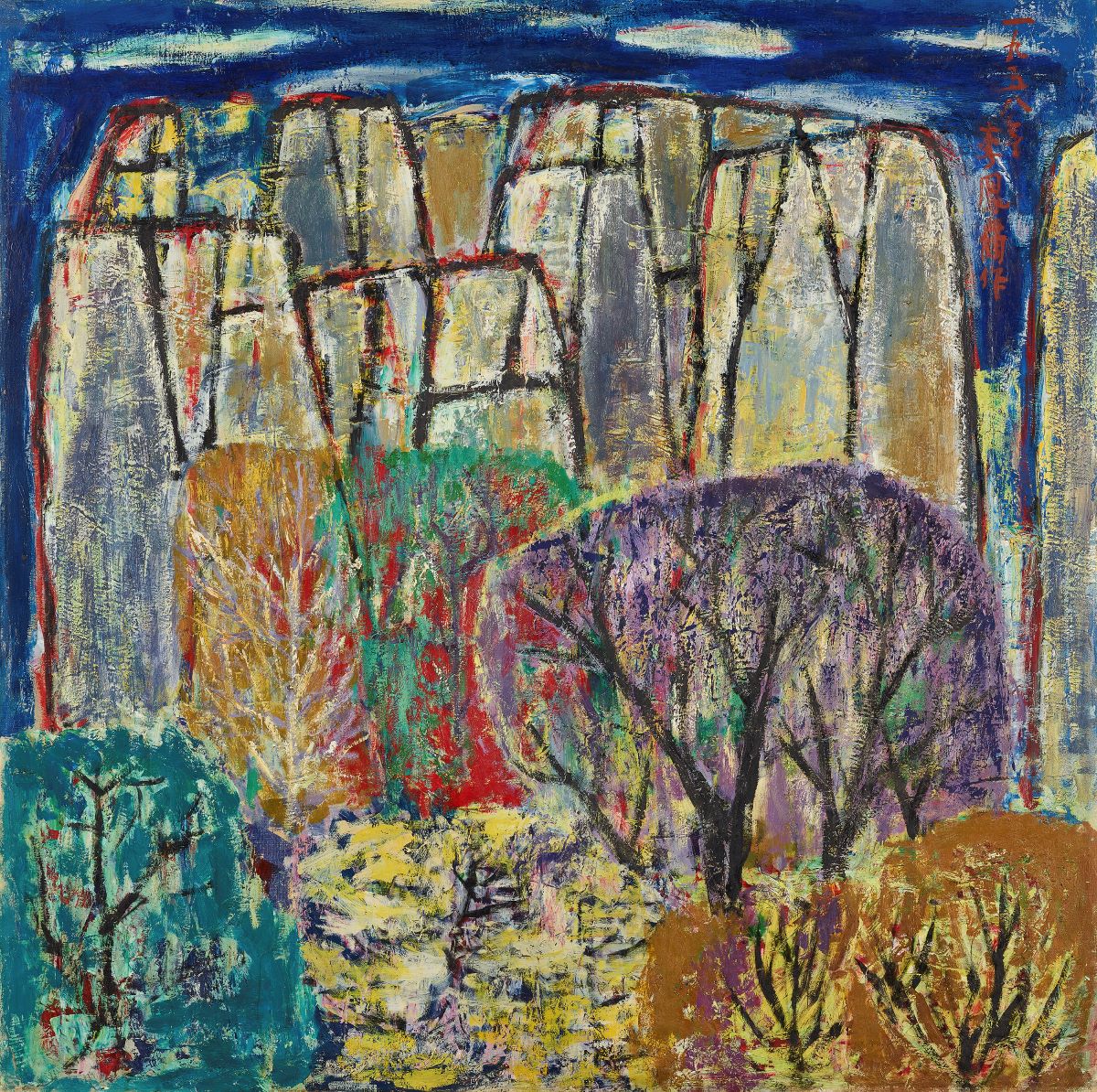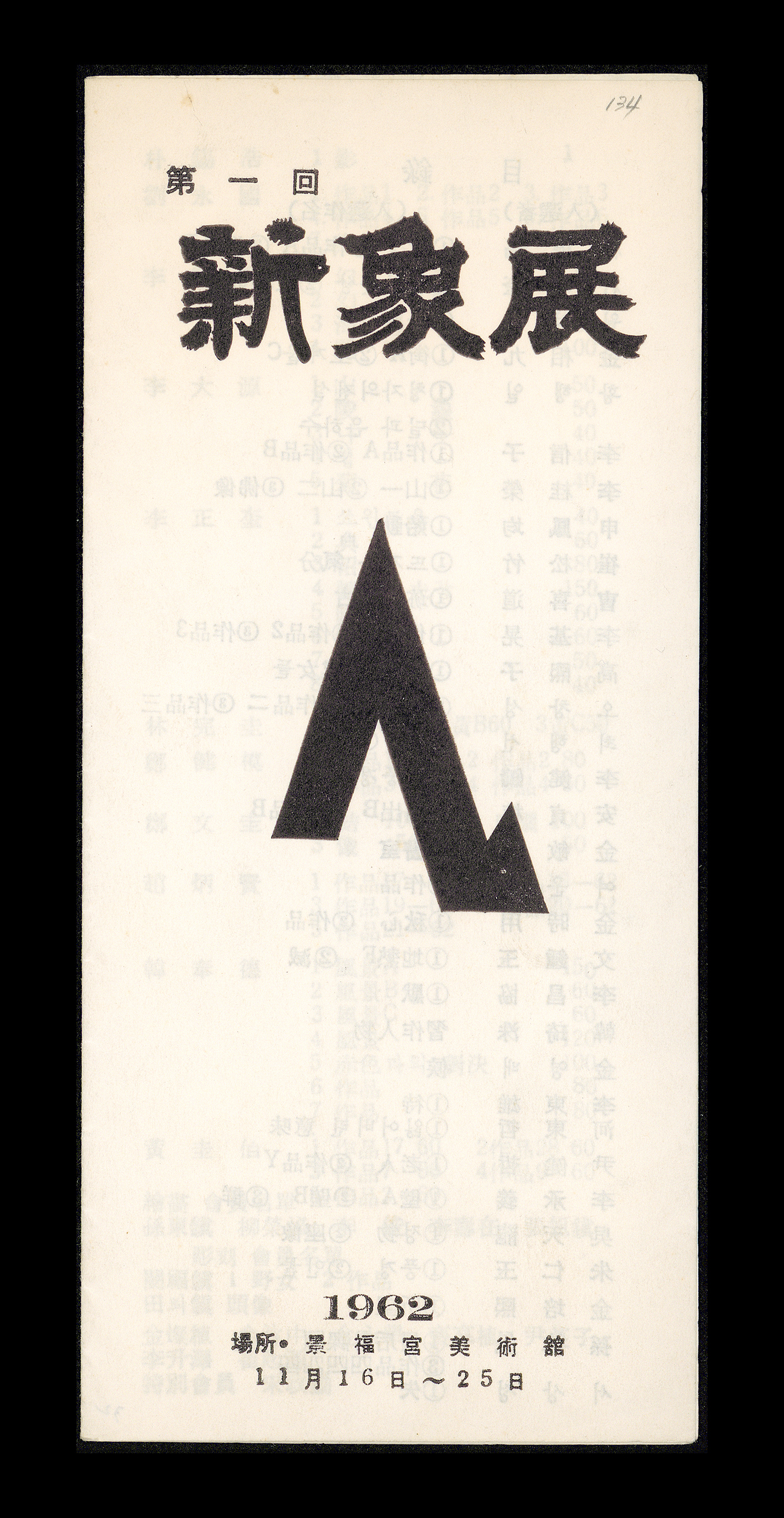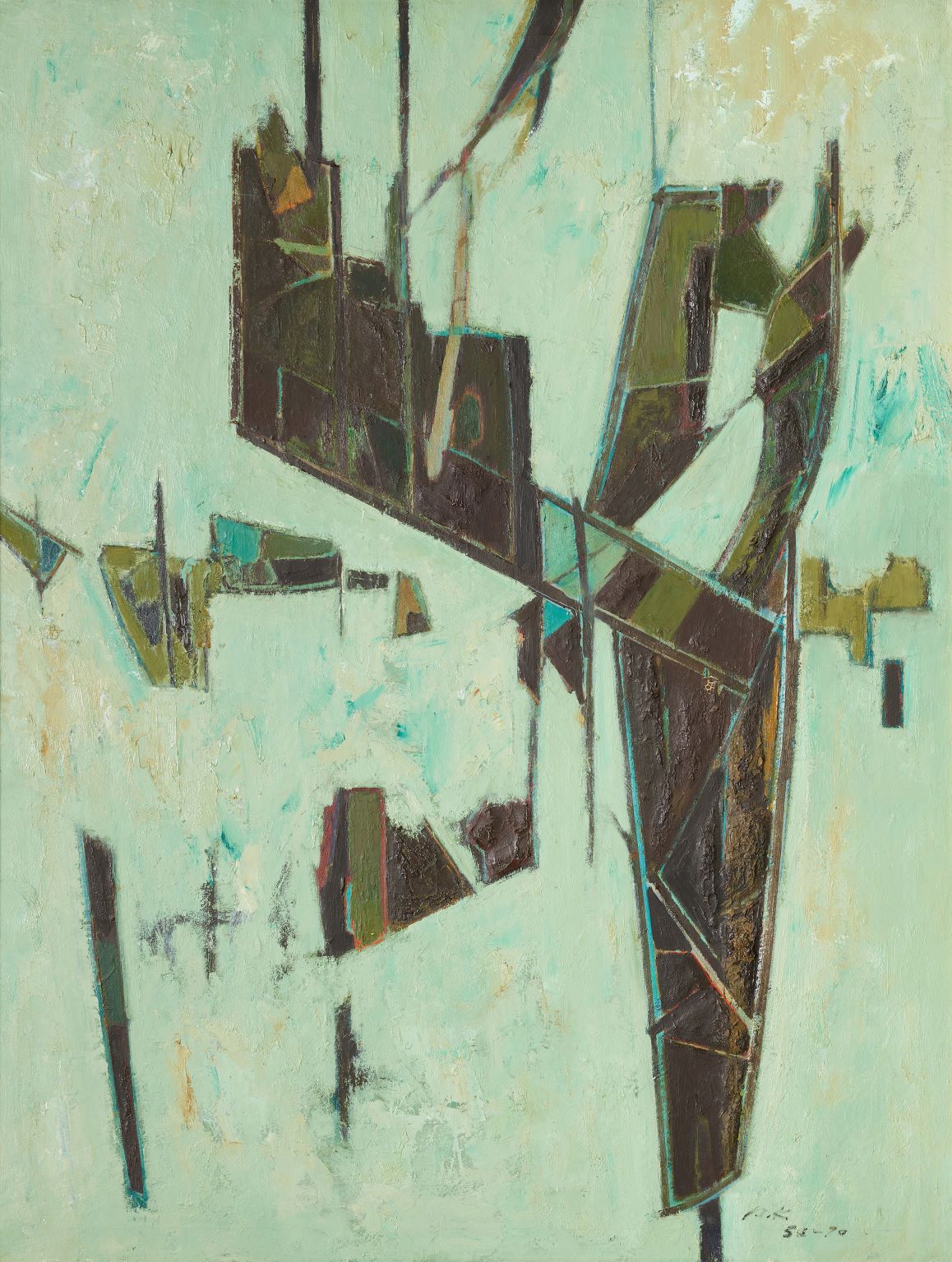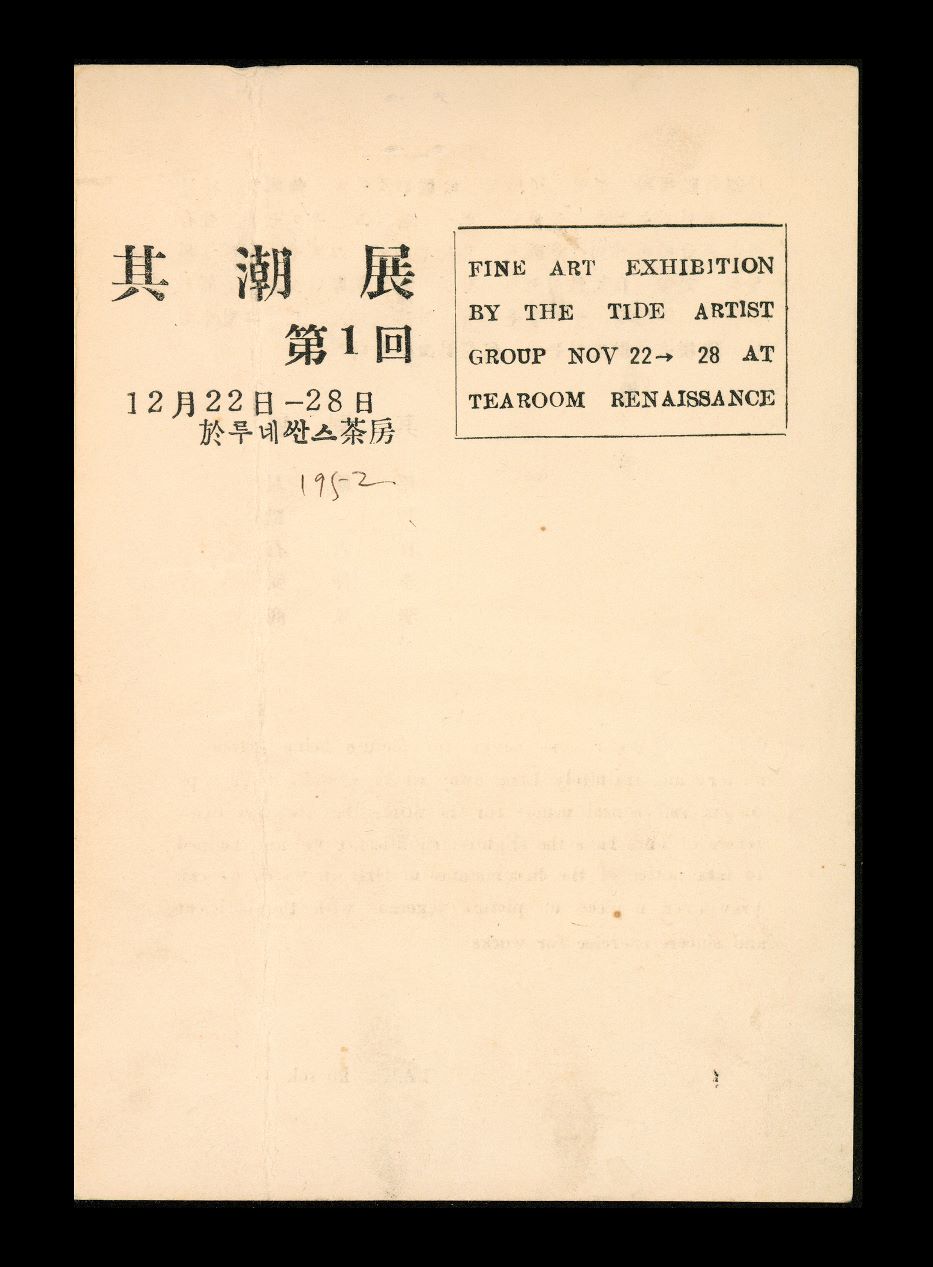
Lee Bongsang, Mountain, 1958, Oil paint on canvas, 105×106cm. MMCA collection
Lee Bongsang
* Source: MMCA
Related
-

1950 Art Association
An alliance of artist associations established in 1950 by representatives Kim Whanki, Nam Kwan, and Lee Qoede and secretary general Kim Byungki. Groups excluding the Great Korean Art Association [Daehan misul hyeophoe] formed the 1950s Art Association for deconstruction for the purpose of the development and promotion of national art. While differing perspectives exist on the exact mission of the association, it is often considered to have embodied the desire of these established artists to progressively develop national art, regardless of their ideological differences. The association planned an exhibition for July 1, 1950, but it failed to come to fruition because of the outbreak of the Korean War. While the association was active for a short period of time, it left behind a legacy of public education programs on art theory, through endeavors such as initiating a series of lectures on contemporary painting. The solidification of the anti-communist agenda during the war caused the majority of the members of the Korea Art Alliance to depart for North Korea, and others, with the exception of Kim Whanki and Nam Kwan, joined the Great Korean Art Association. The association is therefore seen as an independent organization that opposed the establishment authority centered on the National Art Exhibition (Gukjeon).
-

Lee Bongsang Painting Research Institute
A painting institute established in February 1957 by Lee Bongsang, located in Anguk-dong, Seoul. In 1960, the name was changed to the Seoul Art Institute. The institute purportedly originated during a croquis gathering of artists including Lee Bongsang, Park Seo-Bo, Kim Tschang-Yeul, and Park Soukho. The institute offered a basic course and professional course for amateur members and art students respectively. The institute also established the Children’s Art Institute, which taught plaster sculpture and oil painting. The teaching staff of the institute included Park Seobo, Ahn Sangchul, Chun Sangsoo, Kim Tschang-Yeul, Chang Seongsoun, Lee Myeong-eui, Bang Geun-taek, Chang Reesouk, and Park Hangsup.
-

Sinsanghoe
A group established through an alliance of a total of 23 artists and sculptors. Some were members of the Modern Art Association and Creative Art Association, some belonged to Sinjohyeongpa, and the rest were otherwise unaffiliated. The first exhibition was organized into the painting and sculpture divisions, while the design division was established starting with the second exhibition. The group sought to discover upcoming artists by holding contests, but it eventually disbanded after its seventh exhibition in 1968. The leadership comprised Lee Daiwon, Yoo Youngkuk, and Lee Bongsang. The painters included Kim Changeuk, Moon Woosik, Park Soukho, Park Changdorn, Park Hangsup, Son Dongchin, Lee Daljoo, Lee Joon, Lim Wangyu, Chung Keonmo, Choi Dukhyu, Han Bongduk, and Hwang Yooyup; the sculptors included Min Bokjin, Jeun Loijin, Kim Youngjung, and Kim Younghak; and Han Hongtaik was the craftsman and designer.
Find More
-

Kim Byungki
Kim Byungki (1916-2022) was one of the first-generation Korean abstract artists. He was born in Pyongyang as the second son of Kim Chanyoung, who graduated from the Tokyo School of Fine Arts. He associated with Kim Whanki at the Avant-garde Western Art Institute in Tokyo in 1933, and in 1939 he studied at the Art Department of Bunka School in Tokyo together with Lee Jungseop and Mun Haksu. After his return to Korea, he served as a secretary of the Korean Art Alliance (Joseon misul dongmaeng) in Pyongyang and then moved to Seoul in 1948. Kim Byungki established the 1950 Art Association (Osimnyeon misul hyeophoe) under the Korean Culture Research Institute in 1949 and, as its secretary-general, tried to unite established artists, but due to the outbreak of the Korean War, it never held exhibitions. During the war, he worked as a deputy director of the military painter group. In 1954, he participated in the Special Exhibition on Modern Korean Painting at the National Museum. After reading an article in The Times related to Pablo Picasso’s painting Massacre in Korea (1951), Kim published “Farewell to Picasso” in the first issue of Munhak yesul (Literature and Art) in 1954. He also devoted himself to art practice, art education, and art theory by teaching at Seoul National University, Seoul Arts High School, and the Institute of Contemporary Art and participating in the first Contemporary Art Exhibit hosted by the Chosun Ilbo newspaper company. He was commissioner of the Paris Biennale in 1961. In 1965, as the board president of Korean Fine Arts Association, he worked as commissioner and judge of the São Paulo Biennale. At the time, he moved to the U.S. and settled in Saratoga, New York, where he absorbed himself in creating artworks for twenty years until he returned home. In 1986, he held a solo exhibition at the Gana Gallery in Seoul. In 1989 he returned to the U.S. and Kim returned to South Korea permanently in 2014 for the MMCA’s exhibition Kim Byungki: The Distribution of Sensible. In 2022, he passed away at the age of 106. Among his notable works are Street Trees (1947), Still Life by Window (1954), Mountain (1967), Forest and Still Life (1987), and Winter Scene (2000).
-

Lee Jungseop
Lee Jungseop (1916-1956, pen name Daehyang) was born in Pyongyang. He learned oil painting from Yim, Gilbert Pha at Osan School, Jeongju. He attended the Teikoku Art School in Japan in 1936 and moved to the Bunka Gakuen to learn oil painting in 1937. During his school years, he submitted his work to Japan Free Artists Association [Jiyū bijutsuka kyōkai] in 1938 and to the New Artists’ Association [Sin misulga hyeophoe] Exhibition. After his return to Korea in 1943, he was active in Wonsan and moved to South Korea with his family after the outbreak of the Korean War. He sought shelter in Busan and Seogwipo but had to send his Japanese wife and two sons back to Japan in June 1952 due to financial difficulties. He submitted work as a war correspondent painter. He orchestrated solo exhibitions in Tongyeong in 1953 and Midopa art gallery in Seoul and for the United States Information Service Center at Daegu in 1955. He died at a Red Cross hospital in 1956 after suffering from malnutrition and liver cirrhosis. His works, such as White Ox, illustrated local subject matter and family life with a simple touch, and one of his drawings on silver foil was purchased by the Museum of Modern Art in New York. A high-profile posthumous exhibition in 1972 at Hyundai Hwarang greatly increased the popularity of his work among the general public.
-

Gijohoe
An art group formed in Busan in the fall of 1952. Its members included Park Kosuk, Son Eungsung, Lee Bongsang, Lee Jungseop, and Han Mook. The group held its inaugural exhibition at the Renaissance Dabang in Busan from the 22nd to the 28th of December. The group issued a "Declaration," the topic of which was a "consideration for the creation of an environment for survival" in the context of the Korean War. Lee Jungseop submitted three pieces including ‘Landscape of Wanwol-dong’ and Son Eungsung submitted ‘Chuje (秋題)’. Lee Bongsang and Han Mook submitted six works each, and Park Kosuk five.






